
Discovery of the M31 [OIII] emission arc
Recently, a major discovery by an international team of amateur astronomers and scientists has become a huge online hit, and this new discovery is just located in one of the
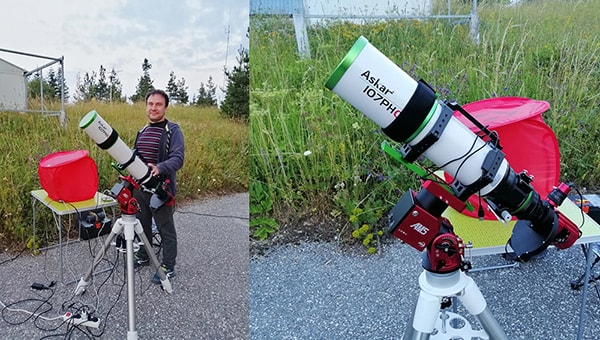
By Rumen G.Bogdanovski,
Software engineer, PhD in Astrophysics and astrophotographer
I am an astrophysicist, software developer, and astrophotographer. My passion for astronomy dates back to my earliest memories. One of my fondest recollections is watching Carl Sagan’s Cosmos with my father on a black-and-white TV. I understood next to nothing and I asked many questions. I was mesmerized by the beauty of the night sky—the stars, the moon, the Milky Way, and I could not figure out where galaxies, nebulae, and planets were. I could not see them but believed they were somewhere there, Carl Sagan said so and my father confirmed. As time passed, my fascination with astronomy and astrophotography only grew stronger and I wanted to study and image those hidden gems.
Over the years, I have used professional telescopes ranging from 60 cm to 2.4 m in diameter. However, their usage is restricted, requiring a scientifically motivated observational plan and approval from a committee, which may or may not grant you several nights over the next few months. Therefore, nothing compares to having a good amateur telescope that is always available. This led me to acquire my own telescope, and over the years, I have changed several mounts until I switched to ZWO AM5 and recently to the AM5N.
Here I want to note that this review is not by any means excessive and unbiased and I will share my personal experience with the ZWO AM5 and AM5N.
I have been a ZWO AM5 user since its launch in 2022. To be honest, I took a leap of faith when I placed my order long before it was launched. First, because it was a strain wave gear mount with significant quasi-periodic error, and second, because ZWO was a well-established camera maker with excellent cameras but no experience in making mounts. However, I knew the company and I was confident they would not risk their reputation with a bad product, and I wanted to be one of the early adopters because I am developing INDIGO, a software framework for astrophotography, and I wanted to create a driver for that mount. Even then, there was one thing I knew I did not like about the AM5: the artwork on the black plate, so I ordered mine without it.
Before I could use the mount, I needed to write the INDIGO driver. I had good communication with ZWO support because I had already developed the INDIGO drivers for the ZWO cameras, focusers, and filter wheels. With their help, the driver was completed in no time.
Needless to say, ever since I got this mount and finished the driver, I have never used my old and trusty worm gear mount. The AM5 was able to carry the same payload at one-fourth of the weight, and to my surprise, it was just as precise. My copy had by far the worst periodic error (PE) report I have ever seen. The included report reads Max PE 29.6″ and Min PE 15.7″. Many users published their reports on social media, and I was a bit frustrated because most of them had Max PE close to 15″. Compared to mine, which has almost twice that. On the other hand, when I looked at the images, they were excellent. The guiding accuracy at the celestial equator, where tracking is the hardest, was about 0.6″ RMS on a calm night with a 1.5s guiding cycle. Quite good, I would say.
The next thing I noticed was that I had no bad frames. With the worm gear mount, there were all sorts of problems that constantly ruined several images per night—backlashes, gusts of wind, etc. With the AM5, all frames had round and sharp stars, and in the two years I have been using this mount, I have never seen a single bad frame caused by it. The responsiveness and accuracy of the guiding easily handle the relatively large PE. Due to the imbalance, this mount handles wind a lot better than traditional worm gear mounts.
I am the kind of person who does not like to leave his equipment to the elements, so I assemble and disassemble my gear every night when I am imaging. This is when I found the second thing (along with the artwork on the plate) I did not really like about the AM5—when I polar align the mount and try to tighten the azimuth locks, the mount slightly bounces out of alignment. However, I quickly found a solution. When I keep the locks slightly tight, this problem is negligible.
The mount comes with a simple gamepad-style hand controller—no goto, no objects database. One can only move the mount in all four directions, start or stop tracking, and send it to the home position. But this is okay because the mount is designed to be controlled by a computer or a smart device like a phone or tablet. I never used the mount with the hand controller as I control it from INDIGO running on a Raspberry Pi single-board computer or a regular PC. Probably the most useful feature of the hand controller is that it provides WiFi connectivity, but I would rather have a USB wire from the computer to the mount instead of having the hand controller dangling, hung on some bolt on the mount.
I wish the WiFi was built into the mount itself, but this is a design decision, and there may be some reason behind it that I do not understand.
Despite these small cons, I think this mount is a little gem. It is easy to use and an excellent performer in its main goal, namely to track the stars and help capture nice images of the sky like these:



Recently, ZWO announced the new AM5N (I guess the “N” stands for “new”) and I quickly went through the specs. I saw several new features that I found very useful and decided to order the new version. Otherwise, visually, there are no striking differences.
The selling feature for me was the power outlet and the USB port on the saddle. This makes cable management a lot easier when you use a small computer like a Raspberry Pi or ASIAir mounted on the telescope.
Another thing that I was happy to see is that the azimuth adjustment locks are gone, and springs keep the tension, avoiding the need to lock the azimuth when polar alignment is completed. As I mentioned before, this was causing some issues with the previous version. I am glad to see this resolved.
The AM5N adds another connectivity method—Bluetooth, which is very useful for users with mobile devices. Unfortunately, the WiFi is still in the hand controller, and if you want to control the mount over WiFi, you still need the hand controller connected.
The increased payload of 15 kg without a counterweight and 20 kg with a counterweight is another nice feature. For my setup, the carrying capacity of the original AM5 is enough, but the extra 2 kg capacity may be a deal-breaker for users with heavier setups.
Another improvement is the lower periodic error. For the original AM5, the tolerance of the periodic error was ±20″ with a duration of 288s, and for the AM5N, it is ±10″ with the same duration. This is pretty impressive, but I consider this more of an evolution of the strain wave gears rather than a leap. I have been following the published PE reports on social networks, and the evolution is clearly visible. The latest produced units of the original AM5 have PE reports indistinguishable from those of the AM5N. Do not get me wrong, this is still a huge improvement and a commitment from ZWO to deliver more accurate mounts from now on. Very few strain wave gear mount manufacturers commit to better accuracy and the ones that do use encoders to achieve this but at a considerably higher price.
My original AM5 was one of the first produced and has a Max PE of 29.6″, and the new AM5N comes with a PE report that reads Max PE 7.8″. This made me curious about how this would translate to real tracking, so I set up an experiment. The first night after AM5N was delivered, I used my Askar 65PHQ on my old AM5 for 30 minutes before the meridian, and then I switched the mount with the AM5N and used it for the next 30 minutes right after the meridian. I used 1.6 sec guiding exposures using an off-axis guider, close to the equator where the guiding is the most demanding for the mount. The night was clear and the seeing was good. The old mount did quite well, the guiding RMSE was stable between 0.50″ and 0.58″. I have rarely seen such figures from my Bortle 7 balcony during the two years of using my AM5, but the new AM5N really shined with its 0.35″ – 0.44″.
To date, I have had a chance to use the new mount for only five nights, and I am quite happy with the performance. Unfortunately, I still do not have enough data for a complete image with the AM5N, but combined with the AM5, I imaged the Lagoon and Trifid nebulae in SHO, 20 hours with the AM5 and 10 hours with the AM5N, and here is the result:

The AM5N is an excellent mount, and the upgrades over the AM5 are lessons learned from experience. They are definitely worth it, especially because AM5N is available at the price of the original AM5. Telescope mounts are all about tracking, and the AM5 shows guiding performance equal to (if not better than) the performance of some significantly more expensive brands I have seen, and the AM5N is even better. In my opinion, the ZWO AM5N is unbeatable in terms of price performance. And last but not least, using AM5/AM5N is a lot of fun.

Recently, a major discovery by an international team of amateur astronomers and scientists has become a huge online hit, and this new discovery is just located in one of the
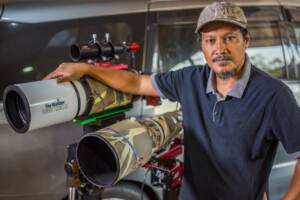
1.How It All Began I have been a fan of astronomy since high school.Starting from a school event where I can see the moon up close through a telescope.When I

1. How It All Began For Puig Nicolas, it all started at the age of 10 with a 60/700 refractor and a 114/900 reflector. His first celestial encounters — the
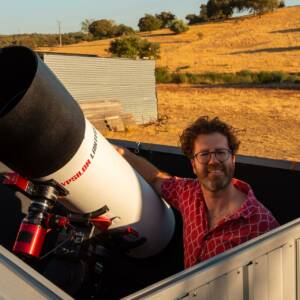
By day, David Cruz works as a digital designer. By night, he designs something far greater — images of the universe itself. “Since I was young, I was always interested
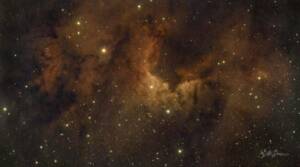
bbrown_admin, October 30, 2025 INITIAL IMPRESSIONS: The ZWO ASI585MC Air came well packaged from the manufacturer. The box is improved and has an impressive feel with a magnetic closure on
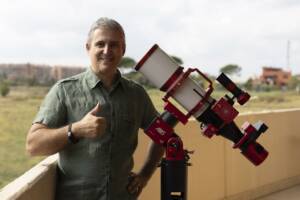
– Q3 ASIWEEK Winner Gianni Lacroce’s Astrophotography Journey Hi, I’m Gianni Lacroce, an Italian astrophotographer. My passion for the night sky began long before I owned a telescope or a